|
|
| Пишет marinni ( @ 2011-03-14 16:25:00 |
|
|
|
|
|
|
|
|
|
|
|
|
|
|
Ванитас."Нomo bulla" и мыльные пузыри. Часть 3

Мыльные пузыри на картинах в жанре "ванитас" символизируют краткость жизни и внезапность смерти.
Произошло это выражение от изречения "Нomo bulla" — "человек есть мыльный пузырь".

Juan de Valdés Leal, Alegoría del tiempo.(1630 - 1691)

Сейчас часто мы видим внешнюю сторону картины, и принимаем ее за жанровый сюжет- ребенок выдувает мыльные пузыри. В 17 веке сюжет понимали совсем иначе, ведь мыльным пузырям сопутствовали другие символы ванитас: черепа, часы, раковины, деньги и сокровища, шары и многие другие предметы.

Rosa, Salvator. (1656).
L’Umana Fragilita (Human Frailty).
---------------Натюрморт--------------
=======================================

Mezzotint by Johann Jakob Haid (1750)
"Vana Omnia": "All is Vanity"
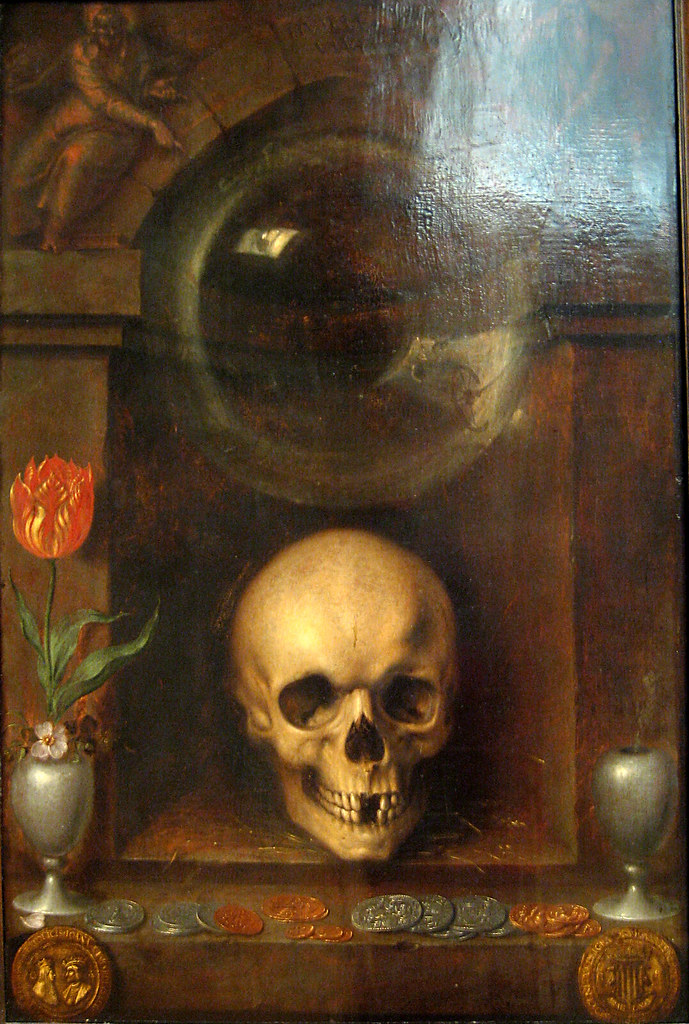
Jacques de Gheyn the Elder, Vanitas Still Life, 1603.
Жанр "Vanitas "- от латинского
"vanus" - пустой, эфемерный, бренный, суета сует.
Это изображение человеческой жизни через символы с целью подчеркнуть ее неустойчивость и хрупкость.
Жанр ванитас возник в первые годы XVII века и стал очень популярен, показывая через символы мимолетность земной жизни, преходящий характер земных удовольствий, роскоши и тщеславия.
Изображения мыльных пузырей часто использовались в символике Vanitas, в графике,скульптуре, живописи: натюрмортах и жанровых картинах, особенно в 17-го веке.
В шестнадцатом веке, голландский философ Эразм употребил латинское выражение "Homo bulla" ("человек есть пузырь") в своем "Adagia" (сборник изречений, опубликованный в 1572 году).
------------------------------

Simon Renard De Saint-Andre (1613-1677)
Vanitas
Oil on canvas
1650
Musee des Beaux-Arts (Lyon, France)

David Bailly
Vanitas Still Life with Portrait
1650

BAROQUE SOAP-BUBBLES 17TH
Kessel,Jan van
Les bulles de savon, le medaillon par Teniers. Canvas, 67,5 x 51,5
Louvre,Dpt.des Peintures, Paris, France
-----------------------------

David Bailly (1584-1657) Self-Portrait with Vanitas Symbols
-------------------------------

Jean-Baptiste Oudry (1686-1755) An Allegory of Air
------------------Homo Bulla------------
========================================
------------------Soap Bubbles--------------
========================================
----------------Мыльные пузыри------------
========================================
-----------------барельефы--------------
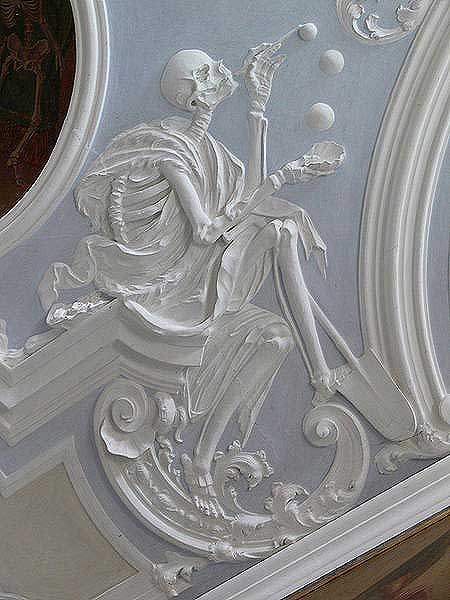
Death and Soap Bubbles, stucco relief, 18th century. Holy Sepulcher Chapel, Michelsberg Cloister, Bamberg
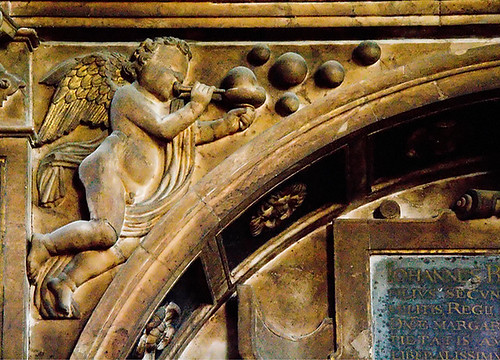
vanitas
Detail of a 1625 Brograve tomb in Braughing.
---------------------Витражи------------
В 17 веке художники изображали детей и мыльные пузыри, чтобы передать краткости человеческой жизни, быстротечности красоты и неизбежность смерти.

Bubble Man
Peinture sur vitre (Cologne, 1530). Deux enfants jouent en créant des bulles de savons. Le peintre a voulu illustrer le proverbe, « homo bulla », l’homme est comme une bulle, tiré des Adages d’Erasme (1469 – 1536) humaniste et philosophe hollandais.
----------------графика-------------
========================================
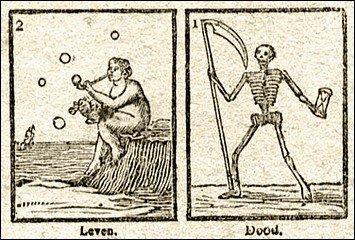
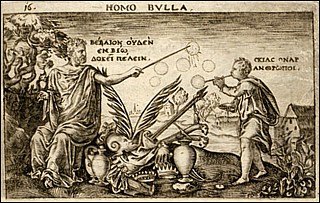


J. J. Scheuchzer - Memento Mori
Tinea, pulvis et umbra [The moth, dust and shadow], Tabula DXLIX ex:
Johann Jakob Scheuchzer, Physica sacra, 4 Volumes, Augsburg und Ulm 1731.

After Georg Christoph Eimmart I
Printed by Joseph Dietrich Hampel
Johann Jacob Wolf von und zu Todenwart lying in his open coffin; after Georg Christoph Eimmart the Elder; below a cartouche with Wolf's arms at centre and flanked by putti, the one at left playing with soap bubbles, the one at right with a skull; illustration to Matthäus Schmoll, 'Christliche Vermahnung ...', Giessen: Hampel, 1657.
Etching and engraving

Print made by Abraham Aubry
Architecture; female personification wearing the model of a building on her head, holding a pair of dividers and a plan, seated among architectural instruments at the centre of an aedicular structure with sea monsters and putti blowing soap bubbles and playing with water at top; title-page to Georg Andreas Böckler, 'Architectura Curiosa Nova', Nuremberg: Paul Fürst Heirs, c.1670.
Etching
------------------Графика-----------
========================================
-----------------Младенцы и дети--------------
========================================

GOLTZIUS, Hendrick
Quis evadet?
1594
Engraving, 212 x 153 mm

Published by Hendrik Goltzius
1594 (circa)
Vanitas; allegory of transience; a putti, whole-length, blowing bubbles and astride a skull; at left, a vase of flowers and at right a smoking urn
---------------------------------

Print made by Raphael Sadeler I
After Marten de Vos
1590 (c.)

After Marten de Vos.1590 (c.)
Allegory of transitoriness. Landscape with two naked youths, one sitting on an urn and blowing a soap bubble, the other lying asleep with his arm on a skull near an hour-glass; after Maarten de Vos
Engraving
-----------------------------------

Drawn by Jacob de Gheyn II
1599
Allegorical composition, study for a print; under a pavilion, a picture of the Last Judgement, a child blowing bubbles in a niche below, a peasant standing at left and an emperor at r, two decaying corpses lying below, two medallions in the upper corners representing the Fall of Man and the Crucifixion. 1599
-----------------------------------

Karel van Sichem: Homo Bulla, around 1617
-------------------------

After Balthazar van Lemens
1683-1729
soap-bubbles
-------------------------------

Print made by Hieronymus Wierix
Date
1619 (before)
The infant blowing soap-bubbles; the Virgin and St Anne seated to right holding a long cloth; behind, Joseph and Joachim working with wood and to left, the infant Christ playing with soap-bubbles with two angels.
-------------------------------

Published by John Smith
1680-1729 (c.)
Cupid as an infant blowing soap bubbles, sitting on a plinth; with a curtain in the background to left.
Mezzotint
-----------------------

After Frans van Mieris I
Print made by Jean Georges Wille
The distracted observer; a curly-haired boy making soap bubbles, standing behind a table upon which are an embroidered drapery and some metal vases; in trompe l'oeil stone border; after Frans van Mieris the Elder; finished state, with additional shading on the border; before coat of arms, before letter.
1766
Etching and engraving
----------------------------

After Caspar Netscher
Print made by Jean Georges Wille
The little physicist; a curly-haired boy wearing a hat adorned with a feather, and making soap bubbles; in trompe l'oeil stone border; finished state with coat of arms in lower margin, but before letter; after Gaspar Netscher.
1761
------------------Дамы, роскошь, наряды--------------
========================================
Кошельки с монетами, шкатулки с драгоценностями — драгоценности и косметика предназначены для создания красоты, женской привлекательности, одновременно они связаны с тщеславием, самовлюбленностью и смертным грехом высокомерия.
Украшения и богатая одежда были символами роскоши и тоже часто присутствуют в жанре ванитас, вместе с мыльными пузырями- все это преходяще:

Lady in rich attire with a globe; to the right three children blowing soap-bubbles; two others to the left with fool's caps; landscape depicted in the background; plate to a collection of 33 plates by Crispijn de Passe I or from his work-shop.
1599
Engraving with etching
--------------------------------------

After Abraham Bloemaert
1611
Allegory on Vanitas. A young woman in rich attire blowing soap bubbles, on a table at right a crown, piles of coins, chains and various richly decorated precious vessels; after Abraham Bloemaert. 1611
Engraving
------------------------------

After Godfried Schalcken
Print made by Robert Williams
1680-1704 (c)
Young winged woman smiling, with flowers on her hair, her dress falling down her right shoulder; holds bubble on shell in her right hand and extinguished candle on her left; globe half-covered with robe in the foreground, shipwreck in the background on left; after Godfried Schalken. c.1680-1704
Mezzotint
-----------------------------------

Print made by Benjamin Cole
1712-1783 (circa)
Vanitas; a skull wreathed in laurel on classical ledges, with a score of music, a statue of a Roman soldier in the left foreground with the upper half toppled to the ground, Father Time blowing bubbles in the middle ground to right, leaning against the edge of a ruined colosseum; illustration to an unidentified publication.
--------------Развлечения--------------

After Nicolas Lancret
Print made by Nathaniel Parr
1739-1767
Several figures gathered in a woody landscape; at centre a young man stands on a table and blows some soap bubbles, nearby a young man tries to prevent one of his companions to blow over a house of cards; at their feet, a young woman blows on a windmill held by a young man lying by her side; in the distance, at right, several figures flying a kite; after Lancret, published state.
Etching
------------------Младенцы-живопись-----
========================================

Juan de Valdés Leal, Alegoría del tiempo
(1630 - 1691)
Vanitas/ Allegory of Vanity 1660
Oil on Canvas
Dimensions: 51 7/16 x 39 1/8 in.
Wadsworth Atheneum, Hartford
----------------Rosa, Salvator-------------------
========================================
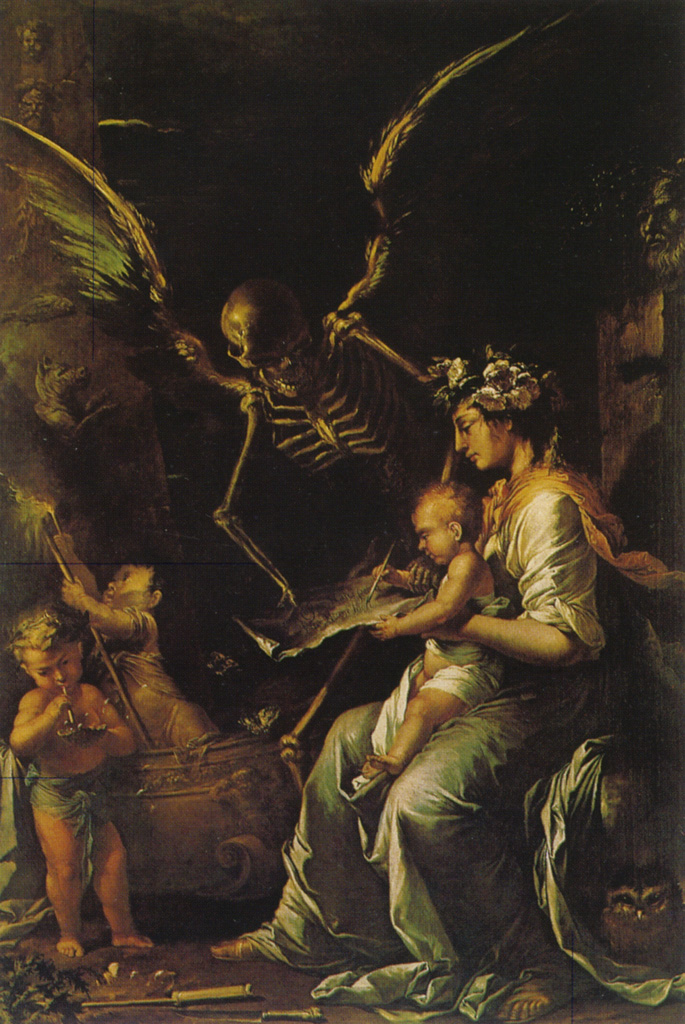
Rosa, Salvator. (1656).
L’Umana Fragilita (Human Frailty).
Fitzwilliam Museum, Cambridge, Massachusetts.


Some of these symbols, though perhaps not used in quite the same way today, are relatively easy to decipher. The bubbles blown by the child at the bottom left, for instance, suggest the brevity of human existence. 'Homo est bulla' - 'man is but a bubble' - was a well known phrase of the day.
--------------------------

Circle of Hans von Aachen (Cologne 1552-1616 Prague)
Homo Bulla Est
inscribed and dated 'QUIS EVADET 1628' (along lower edge)
oil on paper laid down on paper
------------------------
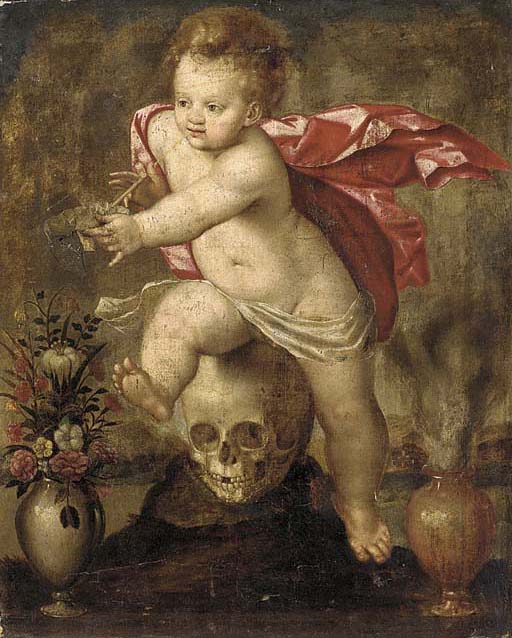
Follower of Otto van Veen (Flemish Mannerist Painter, ca.1556-1629) Homo Bulla
---------------------------------------

Boy Blowing Soap Bubbles 1700-1710
Museum: Hermitage Museum, St. Petersburg
Artist: Tobar Alonso Miguel de
-----------------------------------

Child Playing With Soap Bubbles, Allegory of Vanity
Jan Lievens (1607 – 1674, Dutch)
----------------Живопись-Homo Bulla------------------
========================================

Follower of Reinier de la Haye (Dutch, 1640-1695)

Homo Bulla - A Boy Blowing Bubbles, Bartholomeus Van Der Helst (Dutch Baroque Era Painter, 1613-1670)
+A+vanitas+allegory.jpg)
Attributed to Jaques de Gheyn II (Antwerp 1565-1629) A vanitas allegory
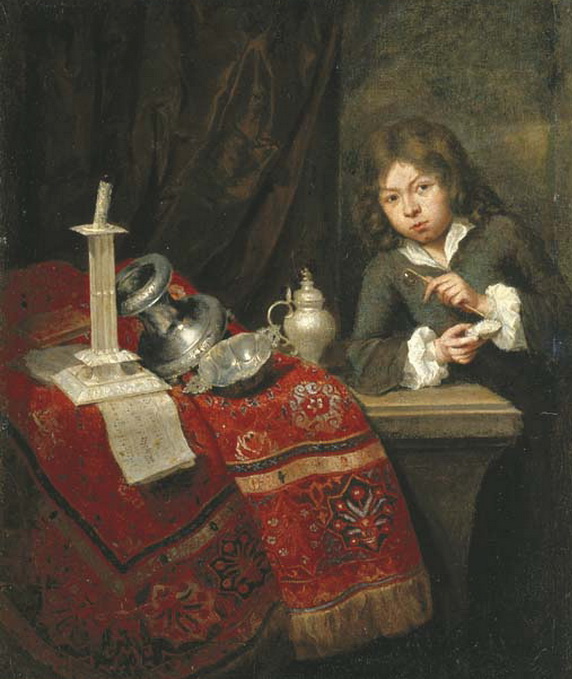
Circle of Caspar Netscher (1639-1684)

Bubble Painting in Vanitas Homo Bulla Gerard Dou, Still Life with a Boy Blowing Soap-bubblesGerard Dou, Still Life with a Boy Blowing Soap-bubbles 1635-36
---------------------------
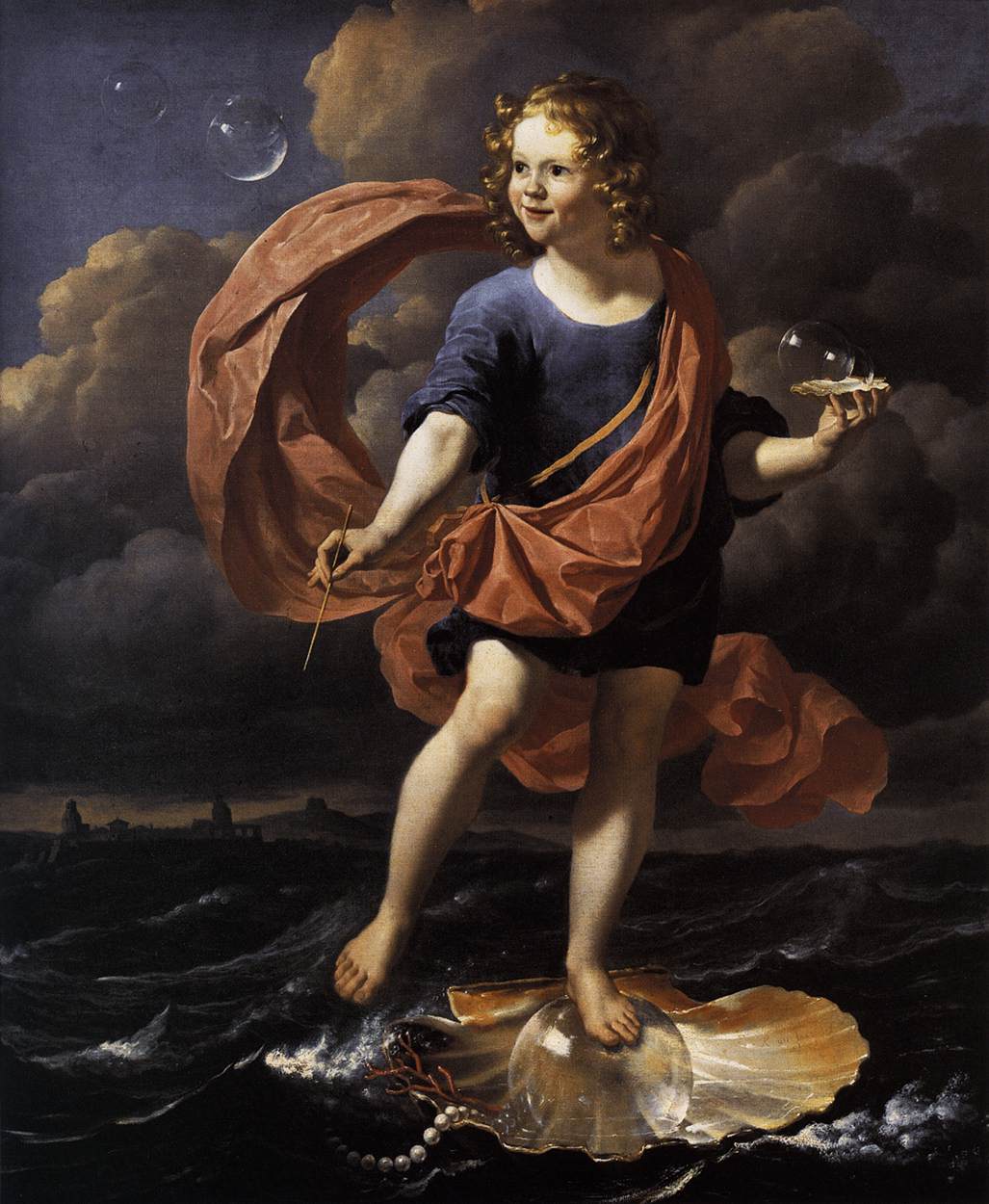
Karel DUJARDIN (Dutch Baroque Era Painter, ca.1622-1678) Allegory 1663
-----------------------------------

NAIVEU, Matthijs
Boy and Girl Blowing Soap Bubbles
Oil on canvas, 50 x 42 cm
Museum of Fine Arts, Boston
----------------------------------------

NETSCHER, Caspar
Two Boys Blowing Bubbles
c. 1670
Oil on panel, 31 x 25 cm
National Gallery, London
-----------------------------------

MIERIS, Frans van, the Elder
Boy Blowing Bubbles
1663
Oil on panel, 26 x 19 cm
Mauritshuis, The Hague
----------------------------
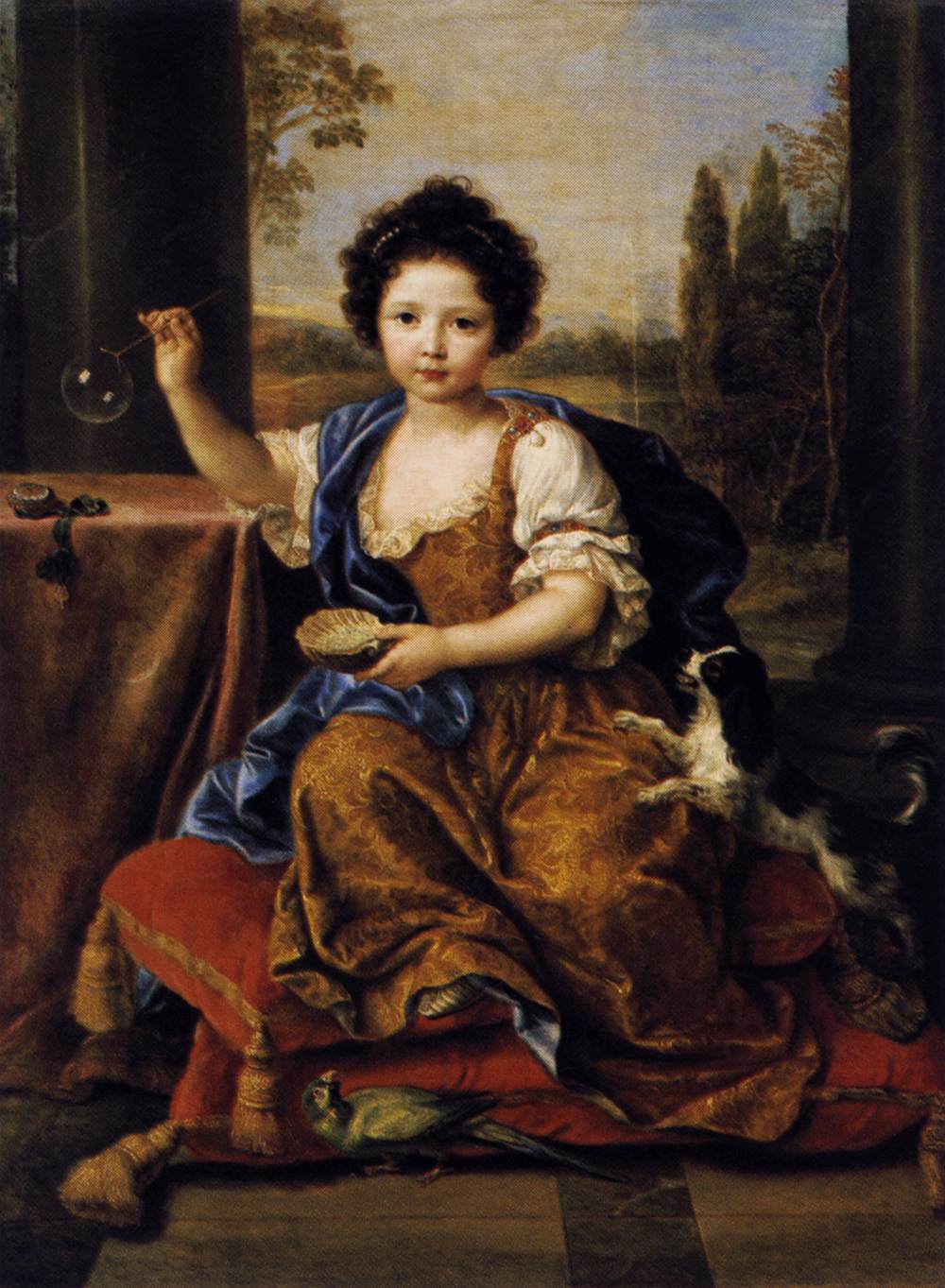
Mignard,Pierre
Anne de Bourbon,called Mademoiselle de Blois (1666-1739),daughter of Louis XIV and Mlle.de la Valliere.In her portrait,the child is blowing soap bubbles. Canvas, 132 x 96 cm
Musee National du Chateau, Versailles, France

Philip Mercier (British-German, c.1689-1760)
----------------------------

Adriana Gerarda Speelman (Dutch, 1801-1847) Homo bulla
------------------Живопись--------------
========================================

Jan Steen, The Life of Man, 1665.

BAROQUE PAINTING 17TH
Mieris,Willem van
Les Bulles de savon. Around 1710/1720. Wood, 32cm x 27cm. INV. 1550
Louvre,Dpt.des Peintures, Paris, France
-------------------ДЕТИ--------------
-----------------Soap Bubbles-----------
========================================
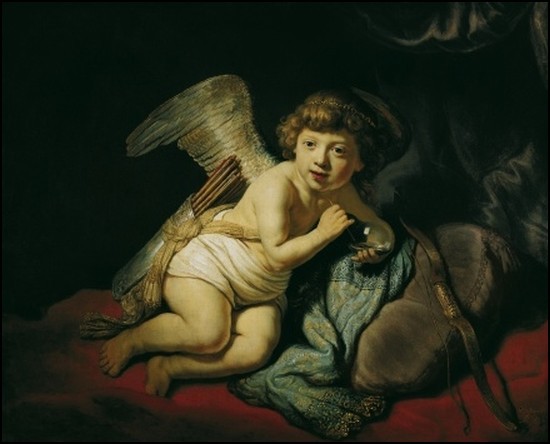
Cupid Blowing Soap Bubbles
Artist: Rembrandt van Rijn
1634 AD
---------------------------------

BURCH, Hendrick van der
Woman with a Child Blowing Bubbles in a Garden
c. 1660
Oil on panel, 59 x 50 cm
Kunsthaus, Zurich
----------------------------

MOLENAER, Jan Miense
Family Making Music
1630s
Oil on canvas, 63,5 x 81 cm
Frans Halsmuseum, Haarlem (on loan)
------------------Жанровые картинки--------------
========================================
-----------------Графика-18 век -------------
========================================
-------------------18 век-----------
========================================

After François Boucher
Print made by Jean Daullé
1758
An infant, sitting and blowing soap bubbles. 1758
Etching and engraving
----------------------------------------

After Frans van Mieris I
A Boy making Soap Bubbles; a young boy leaning outside a window and blowing bubbles in a shell, a woman standing behind him holding a lap-dog; his plumed cap and a vase with sunflowers on the window-sill, a bird-cage in top right; within arched composition; after Frans van Mieris the Elder. c.1780
--------------------------------
Engraving
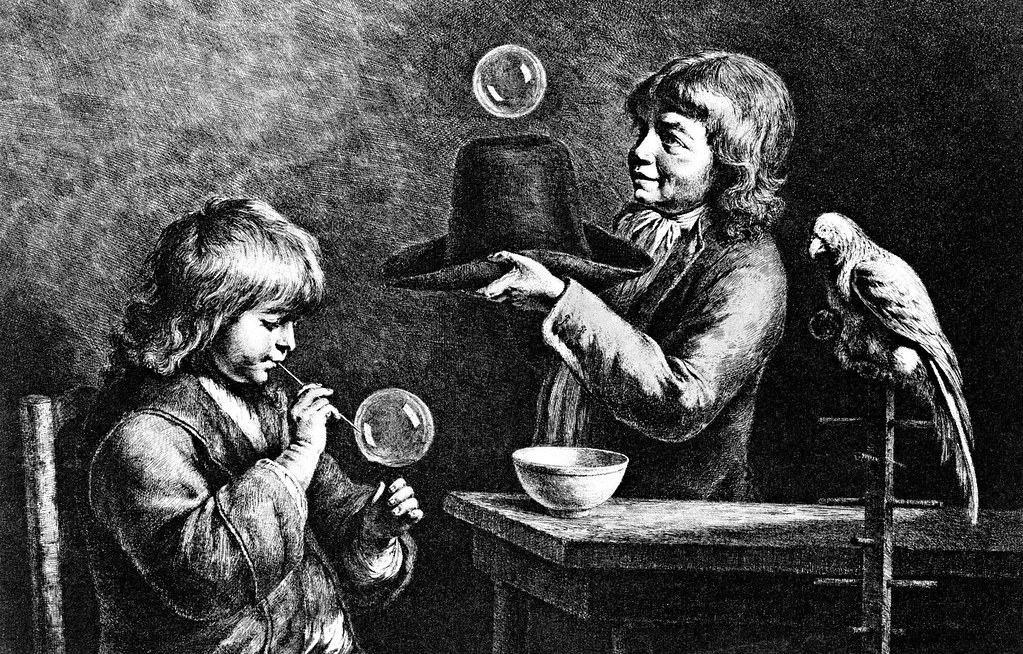
Bubble Man
« les bulles de savons » dessin de Jean Jacques de Boissieu (1799).
----------------------------------------

Baptiste Siméon Chardin
In a domestic interior, a woman doing the laundry in a large basin, while another woman is hanging the washing in the background and a boy, seated near the basin, is blowing soap bubbles. 1739
Etching and engraving
----------------ЖИВОПИСЬ-18 век-----------------
-------------------ДЕТИ-----------------
========================================

CHARDIN, Jean-Baptiste-Siméon
The Soap Bubble
c. 1739
Oil on canvas, 61 x 63 cm
Metropolitan Museum of Art, New York
---------------------------

Parrot,Meissen porcelain,1770. Painting of a boy blowing a soap bubble.
Staatl.Schloesser und Gaerten, Karlsruhe, Germany

Johann Melchior Joseph Wyrsch or Wursch
Title: Soap Bubbles, 1784
--------------------------------

Jean-Étienne Liotard (Swiss, 1702-1789)
-------------------------------
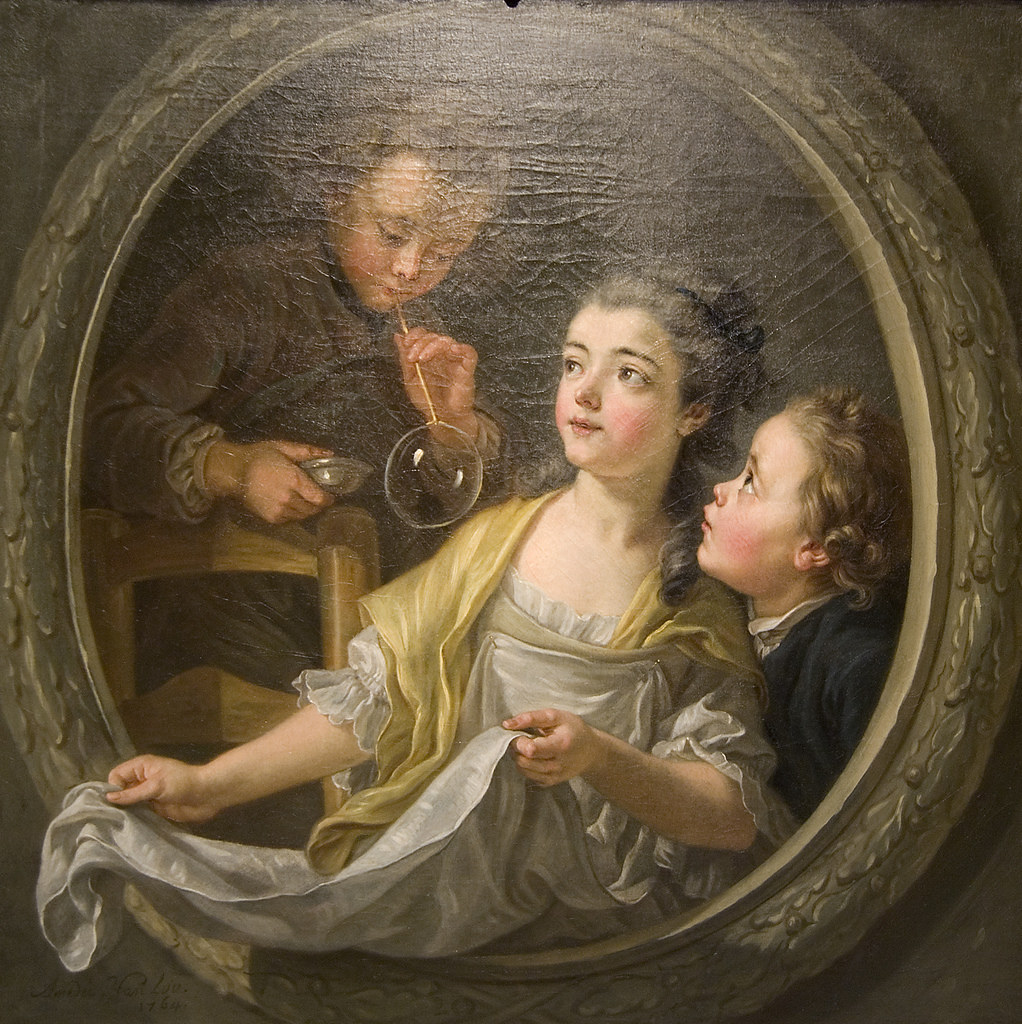
Loo, Charles van - Bulles de savon - 1764
-----------------------------------
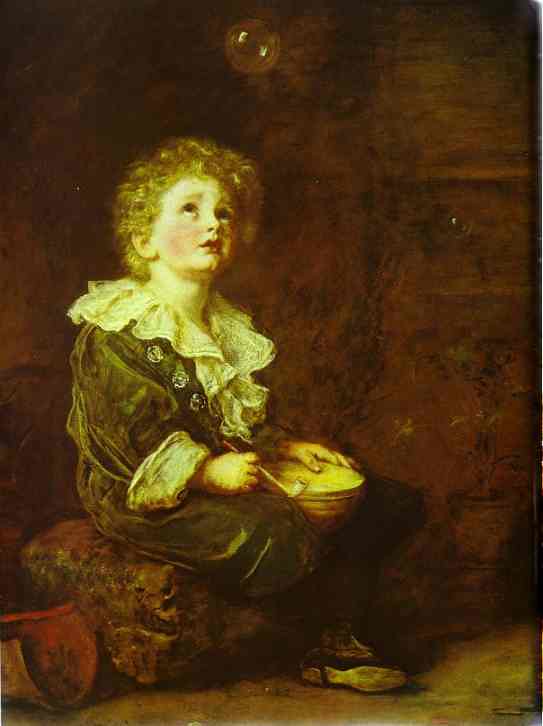
Millais, John Everett - Bubbles - 1886
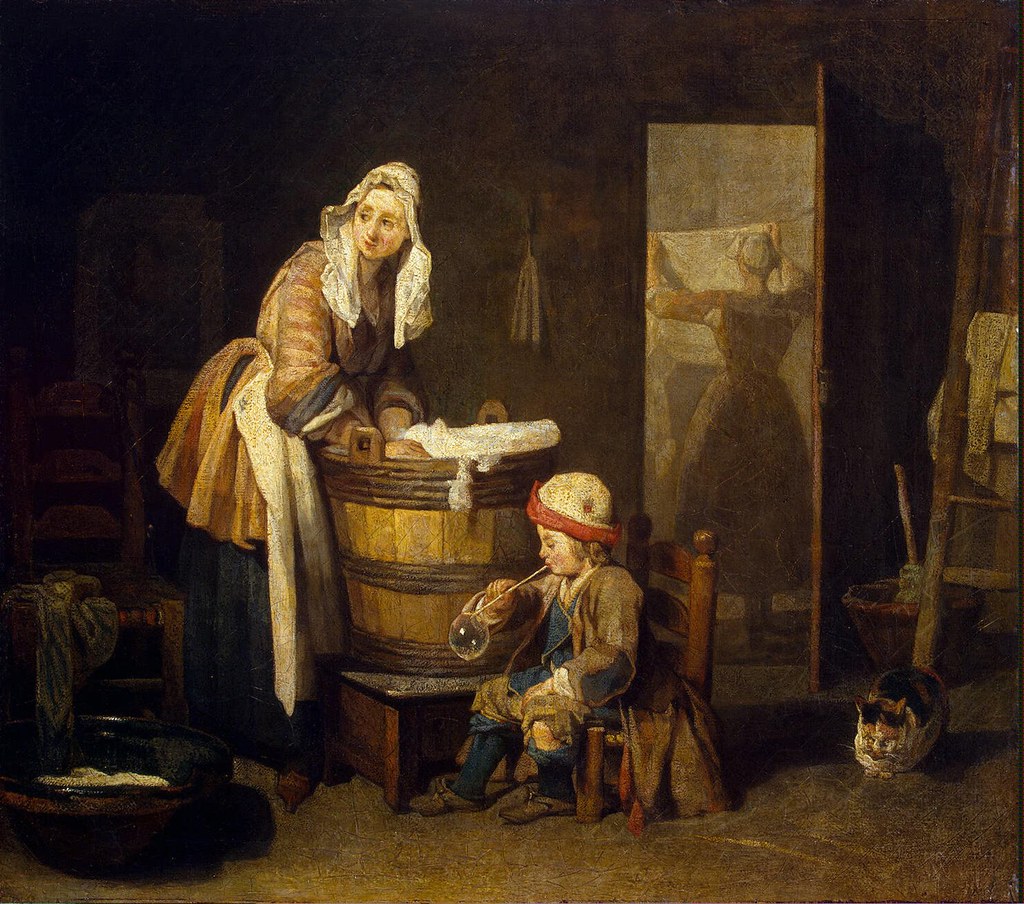
Chardin, Jean-Simeon (1699-1779) - Laundress - s. d.
-large.jpg)
Francois-Louis Lanfant de Metz (1814-1892)
Soap Bubbles And Reading About Fashion (Pic 2)
Oil on canvas

Charles Chaplin (1825-1891)
The Soap Bubbles
Oil on canvas

CLASSICISM PAINTING 19TH
Pelagio Palagi,Filippo
Isaac Newton (1643-1727) discovers the refration of light. Canvas.
Pinacoteca Tosio-Martinengo, Brescia, Italy
Картинок с мыльными пузырями еще очень много, и старинных, и современных. Есть очень интересные, обязательно выложу их во второй части.
ВАНИТАС, начало:
====================================



Ванитас-Vanitas.Сюжеты и аллегории. Часть 2.-ТУТ



Ванитас -Vanitas. Графика и живопись. Часть1.-ТУТ


Jan Davidsz и Cornelis de Heem-ТУТ

IAM of Zwolle,1480-1490
Allegory of The Transience of Life



СМЕРТЬ, все посты-ТУТ
----------------------------------------
Images of bubbles were largely used in vanitas, a type of symbolic work of art especially associated with 17th-century Dutch still life painting and also common in other places and periods. Vanitas is loosely translated from Latin as the meaninglessness of earthly life and the transient nature of vanity. In the 17th century Dutch artists painted children blowing bubbles to convey the brevity of human life, the transience of beauty and the inevitability of death.
In the sixteenth century, the Dutch philosopher Erasmus reintroduced the Latin expression “Homo bulla” (”man is a bubble”) in his “Adagia”, a collection of sayings published in 1572.
The symbolism of homo bulla was proverbial in the 1st century BC.
----------------------ЛИНКИ-------------
http://www.britishmuseum.org/
(http://pre-gebelin.blogspot.com/2009/0
http://oldprints.wordpress.com/2006/0
http://www.wga.hu/frames-e.html?/welcom
http://www.artistsandart.org/
http://www.lessing-photo.com/search.a
http://www.flickr.com/photos/olivierbla
http://www.flickr.com/photos/9739200@N0
http://documenta-akermariano.blogspot.c
http://www.artistsandart.org/2010/06/bu
http://www.google.ru/images?um=1&hl=ru&newwindow=1&client=firefox&rls=org.mozilla%3Aru%3Aofficial&biw=1579&bih=862&tbs=isch%3A1&sa=1&q=Soap+Bubbles+painting&btnG=%D0%9F%D0%BE%D0%B8%D1%81%D0%BA&aq=f&aqi=&aql=&oq=
Ванитас.Продолжение."Нomo bulla" и мыльные пузыри.

Мыльные пузыри на картинах в жанре "ванитас" символизируют краткость жизни и внезапность смерти.
Произошло это выражение от изречения "Нomo bulla" — "человек есть мыльный пузырь".

Juan de Valdés Leal, Alegoría del tiempo.(1630 - 1691)

Сейчас часто мы видим внешнюю сторону картины, и принимаем ее за жанровый сюжет- ребенок выдувает мыльные пузыри. В 17 веке сюжет понимали совсем иначе, ведь мыльным пузырям сопутствовали другие символы ванитас: черепа, часы, раковины, деньги и сокровища, шары и многие другие предметы.

Rosa, Salvator. (1656).
L’Umana Fragilita (Human Frailty).
---------------Натюрморт--------------
=======================================

Mezzotint by Johann Jakob Haid (1750)
"Vana Omnia": "All is Vanity"

Jacques de Gheyn the Elder, Vanitas Still Life, 1603.
Жанр "Vanitas "- от латинского
"vanus" - пустой, эфемерный, бренный, суета сует.
Это изображение человеческой жизни через символы с целью подчеркнуть ее неустойчивость и хрупкость.
Жанр ванитас возник в первые годы XVII века и стал очень популярен, показывая через символы мимолетность земной жизни, преходящий характер земных удовольствий, роскоши и тщеславия.
Изображения мыльных пузырей часто использовались в символике Vanitas, в графике,скульптуре, живописи: натюрмортах и жанровых картинах, особенно в 17-го веке.
В шестнадцатом веке, голландский философ Эразм употребил латинское выражение "Homo bulla" ("человек есть пузырь") в своем "Adagia" (сборник изречений, опубликованный в 1572 году).
------------------------------

Simon Renard De Saint-Andre (1613-1677)
Vanitas
Oil on canvas
1650
Musee des Beaux-Arts (Lyon, France)

David Bailly
Vanitas Still Life with Portrait
1650

BAROQUE SOAP-BUBBLES 17TH
Kessel,Jan van
Les bulles de savon, le medaillon par Teniers. Canvas, 67,5 x 51,5
Louvre,Dpt.des Peintures, Paris, France
-----------------------------

David Bailly (1584-1657) Self-Portrait with Vanitas Symbols
-------------------------------

Jean-Baptiste Oudry (1686-1755) An Allegory of Air
------------------Homo Bulla------------
========================================
------------------Soap Bubbles--------------
========================================
----------------Мыльные пузыри------------
========================================
-----------------барельефы--------------

Death and Soap Bubbles, stucco relief, 18th century. Holy Sepulcher Chapel, Michelsberg Cloister, Bamberg

vanitas
Detail of a 1625 Brograve tomb in Braughing.
---------------------Витражи------------
В 17 веке художники изображали детей и мыльные пузыри, чтобы передать краткости человеческой жизни, быстротечности красоты и неизбежность смерти.

Bubble Man
Peinture sur vitre (Cologne, 1530). Deux enfants jouent en créant des bulles de savons. Le peintre a voulu illustrer le proverbe, « homo bulla », l’homme est comme une bulle, tiré des Adages d’Erasme (1469 – 1536) humaniste et philosophe hollandais.
----------------графика-------------
========================================




J. J. Scheuchzer - Memento Mori
Tinea, pulvis et umbra [The moth, dust and shadow], Tabula DXLIX ex:
Johann Jakob Scheuchzer, Physica sacra, 4 Volumes, Augsburg und Ulm 1731.

After Georg Christoph Eimmart I
Printed by Joseph Dietrich Hampel
Johann Jacob Wolf von und zu Todenwart lying in his open coffin; after Georg Christoph Eimmart the Elder; below a cartouche with Wolf's arms at centre and flanked by putti, the one at left playing with soap bubbles, the one at right with a skull; illustration to Matthäus Schmoll, 'Christliche Vermahnung ...', Giessen: Hampel, 1657.
Etching and engraving

Print made by Abraham Aubry
Architecture; female personification wearing the model of a building on her head, holding a pair of dividers and a plan, seated among architectural instruments at the centre of an aedicular structure with sea monsters and putti blowing soap bubbles and playing with water at top; title-page to Georg Andreas Böckler, 'Architectura Curiosa Nova', Nuremberg: Paul Fürst Heirs, c.1670.
Etching
------------------Графика-----------
========================================
-----------------Младенцы и дети--------------
========================================

GOLTZIUS, Hendrick
Quis evadet?
1594
Engraving, 212 x 153 mm

Published by Hendrik Goltzius
1594 (circa)
Vanitas; allegory of transience; a putti, whole-length, blowing bubbles and astride a skull; at left, a vase of flowers and at right a smoking urn
---------------------------------

Print made by Raphael Sadeler I
After Marten de Vos
1590 (c.)

After Marten de Vos.1590 (c.)
Allegory of transitoriness. Landscape with two naked youths, one sitting on an urn and blowing a soap bubble, the other lying asleep with his arm on a skull near an hour-glass; after Maarten de Vos
Engraving
-----------------------------------

Drawn by Jacob de Gheyn II
1599
Allegorical composition, study for a print; under a pavilion, a picture of the Last Judgement, a child blowing bubbles in a niche below, a peasant standing at left and an emperor at r, two decaying corpses lying below, two medallions in the upper corners representing the Fall of Man and the Crucifixion. 1599
-----------------------------------

Karel van Sichem: Homo Bulla, around 1617
-------------------------

After Balthazar van Lemens
1683-1729
soap-bubbles
-------------------------------

Print made by Hieronymus Wierix
Date
1619 (before)
The infant blowing soap-bubbles; the Virgin and St Anne seated to right holding a long cloth; behind, Joseph and Joachim working with wood and to left, the infant Christ playing with soap-bubbles with two angels.
-------------------------------

Published by John Smith
1680-1729 (c.)
Cupid as an infant blowing soap bubbles, sitting on a plinth; with a curtain in the background to left.
Mezzotint
-----------------------

After Frans van Mieris I
Print made by Jean Georges Wille
The distracted observer; a curly-haired boy making soap bubbles, standing behind a table upon which are an embroidered drapery and some metal vases; in trompe l'oeil stone border; after Frans van Mieris the Elder; finished state, with additional shading on the border; before coat of arms, before letter.
1766
Etching and engraving
----------------------------

After Caspar Netscher
Print made by Jean Georges Wille
The little physicist; a curly-haired boy wearing a hat adorned with a feather, and making soap bubbles; in trompe l'oeil stone border; finished state with coat of arms in lower margin, but before letter; after Gaspar Netscher.
1761
------------------Дамы, роскошь, наряды--------------
========================================
Кошельки с монетами, шкатулки с драгоценностями — драгоценности и косметика предназначены для создания красоты, женской привлекательности, одновременно они связаны с тщеславием, самовлюбленностью и смертным грехом высокомерия.
Украшения и богатая одежда были символами роскоши и тоже часто присутствуют в жанре ванитас, вместе с мыльными пузырями- все это преходяще:

Lady in rich attire with a globe; to the right three children blowing soap-bubbles; two others to the left with fool's caps; landscape depicted in the background; plate to a collection of 33 plates by Crispijn de Passe I or from his work-shop.
1599
Engraving with etching
--------------------------------------

After Abraham Bloemaert
1611
Allegory on Vanitas. A young woman in rich attire blowing soap bubbles, on a table at right a crown, piles of coins, chains and various richly decorated precious vessels; after Abraham Bloemaert. 1611
Engraving
------------------------------

After Godfried Schalcken
Print made by Robert Williams
1680-1704 (c)
Young winged woman smiling, with flowers on her hair, her dress falling down her right shoulder; holds bubble on shell in her right hand and extinguished candle on her left; globe half-covered with robe in the foreground, shipwreck in the background on left; after Godfried Schalken. c.1680-1704
Mezzotint
-----------------------------------

Print made by Benjamin Cole
1712-1783 (circa)
Vanitas; a skull wreathed in laurel on classical ledges, with a score of music, a statue of a Roman soldier in the left foreground with the upper half toppled to the ground, Father Time blowing bubbles in the middle ground to right, leaning against the edge of a ruined colosseum; illustration to an unidentified publication.
--------------Развлечения--------------

After Nicolas Lancret
Print made by Nathaniel Parr
1739-1767
Several figures gathered in a woody landscape; at centre a young man stands on a table and blows some soap bubbles, nearby a young man tries to prevent one of his companions to blow over a house of cards; at their feet, a young woman blows on a windmill held by a young man lying by her side; in the distance, at right, several figures flying a kite; after Lancret, published state.
Etching
------------------Младенцы-живопись-----
========================================

Juan de Valdés Leal, Alegoría del tiempo
(1630 - 1691)
Vanitas/ Allegory of Vanity 1660
Oil on Canvas
Dimensions: 51 7/16 x 39 1/8 in.
Wadsworth Atheneum, Hartford
----------------Rosa, Salvator-------------------
========================================

Rosa, Salvator. (1656).
L’Umana Fragilita (Human Frailty).
Fitzwilliam Museum, Cambridge, Massachusetts.


Some of these symbols, though perhaps not used in quite the same way today, are relatively easy to decipher. The bubbles blown by the child at the bottom left, for instance, suggest the brevity of human existence. 'Homo est bulla' - 'man is but a bubble' - was a well known phrase of the day.
--------------------------

Circle of Hans von Aachen (Cologne 1552-1616 Prague)
Homo Bulla Est
inscribed and dated 'QUIS EVADET 1628' (along lower edge)
oil on paper laid down on paper
------------------------

Follower of Otto van Veen (Flemish Mannerist Painter, ca.1556-1629) Homo Bulla
---------------------------------------

Boy Blowing Soap Bubbles 1700-1710
Museum: Hermitage Museum, St. Petersburg
Artist: Tobar Alonso Miguel de
-----------------------------------

Child Playing With Soap Bubbles, Allegory of Vanity
Jan Lievens (1607 – 1674, Dutch)
----------------Живопись-Homo Bulla------------------
========================================

Follower of Reinier de la Haye (Dutch, 1640-1695)

Homo Bulla - A Boy Blowing Bubbles, Bartholomeus Van Der Helst (Dutch Baroque Era Painter, 1613-1670)
+A+vanitas+allegory.jpg)
Attributed to Jaques de Gheyn II (Antwerp 1565-1629) A vanitas allegory

Circle of Caspar Netscher (1639-1684)

Bubble Painting in Vanitas Homo Bulla Gerard Dou, Still Life with a Boy Blowing Soap-bubblesGerard Dou, Still Life with a Boy Blowing Soap-bubbles 1635-36
---------------------------

Karel DUJARDIN (Dutch Baroque Era Painter, ca.1622-1678) Allegory 1663
-----------------------------------

NAIVEU, Matthijs
Boy and Girl Blowing Soap Bubbles
Oil on canvas, 50 x 42 cm
Museum of Fine Arts, Boston
----------------------------------------

NETSCHER, Caspar
Two Boys Blowing Bubbles
c. 1670
Oil on panel, 31 x 25 cm
National Gallery, London
-----------------------------------

MIERIS, Frans van, the Elder
Boy Blowing Bubbles
1663
Oil on panel, 26 x 19 cm
Mauritshuis, The Hague
----------------------------

Mignard,Pierre
Anne de Bourbon,called Mademoiselle de Blois (1666-1739),daughter of Louis XIV and Mlle.de la Valliere.In her portrait,the child is blowing soap bubbles. Canvas, 132 x 96 cm
Musee National du Chateau, Versailles, France

Philip Mercier (British-German, c.1689-1760)
----------------------------

Adriana Gerarda Speelman (Dutch, 1801-1847) Homo bulla
------------------Живопись--------------
========================================

Jan Steen, The Life of Man, 1665.

BAROQUE PAINTING 17TH
Mieris,Willem van
Les Bulles de savon. Around 1710/1720. Wood, 32cm x 27cm. INV. 1550
Louvre,Dpt.des Peintures, Paris, France
-------------------ДЕТИ--------------
-----------------Soap Bubbles-----------
========================================

Cupid Blowing Soap Bubbles
Artist: Rembrandt van Rijn
1634 AD
---------------------------------

BURCH, Hendrick van der
Woman with a Child Blowing Bubbles in a Garden
c. 1660
Oil on panel, 59 x 50 cm
Kunsthaus, Zurich
----------------------------

MOLENAER, Jan Miense
Family Making Music
1630s
Oil on canvas, 63,5 x 81 cm
Frans Halsmuseum, Haarlem (on loan)
------------------Жанровые картинки--------------
========================================
-----------------Графика-18 век -------------
========================================
-------------------18 век-----------
========================================

After François Boucher
Print made by Jean Daullé
1758
An infant, sitting and blowing soap bubbles. 1758
Etching and engraving
----------------------------------------

After Frans van Mieris I
A Boy making Soap Bubbles; a young boy leaning outside a window and blowing bubbles in a shell, a woman standing behind him holding a lap-dog; his plumed cap and a vase with sunflowers on the window-sill, a bird-cage in top right; within arched composition; after Frans van Mieris the Elder. c.1780
--------------------------------
Engraving

Bubble Man
« les bulles de savons » dessin de Jean Jacques de Boissieu (1799).
----------------------------------------

Baptiste Siméon Chardin
In a domestic interior, a woman doing the laundry in a large basin, while another woman is hanging the washing in the background and a boy, seated near the basin, is blowing soap bubbles. 1739
Etching and engraving
----------------ЖИВОПИСЬ-18 век-----------------
-------------------ДЕТИ-----------------
========================================

CHARDIN, Jean-Baptiste-Siméon
The Soap Bubble
c. 1739
Oil on canvas, 61 x 63 cm
Metropolitan Museum of Art, New York
---------------------------

Parrot,Meissen porcelain,1770. Painting of a boy blowing a soap bubble.
Staatl.Schloesser und Gaerten, Karlsruhe, Germany

Johann Melchior Joseph Wyrsch or Wursch
Title: Soap Bubbles, 1784
--------------------------------

Jean-Étienne Liotard (Swiss, 1702-1789)
-------------------------------

Loo, Charles van - Bulles de savon - 1764
-----------------------------------

Millais, John Everett - Bubbles - 1886

Chardin, Jean-Simeon (1699-1779) - Laundress - s. d.
-large.jpg)
Francois-Louis Lanfant de Metz (1814-1892)
Soap Bubbles And Reading About Fashion (Pic 2)
Oil on canvas

Charles Chaplin (1825-1891)
The Soap Bubbles
Oil on canvas

CLASSICISM PAINTING 19TH
Pelagio Palagi,Filippo
Isaac Newton (1643-1727) discovers the refration of light. Canvas.
Pinacoteca Tosio-Martinengo, Brescia, Italy
Картинок с мыльными пузырями еще очень много, и старинных, и современных. Есть очень интересные, обязательно выложу их во второй части.
ВАНИТАС, начало:
====================================



Ванитас-Vanitas.Сюжеты и аллегории. Часть 2.-ТУТ



Ванитас -Vanitas. Графика и живопись. Часть1.-ТУТ


Jan Davidsz и Cornelis de Heem-ТУТ

IAM of Zwolle,1480-1490
Allegory of The Transience of Life


СМЕРТЬ, все посты-ТУТ
----------------------------------------
Images of bubbles were largely used in vanitas, a type of symbolic work of art especially associated with 17th-century Dutch still life painting and also common in other places and periods. Vanitas is loosely translated from Latin as the meaninglessness of earthly life and the transient nature of vanity. In the 17th century Dutch artists painted children blowing bubbles to convey the brevity of human life, the transience of beauty and the inevitability of death.
In the sixteenth century, the Dutch philosopher Erasmus reintroduced the Latin expression “Homo bulla” (”man is a bubble”) in his “Adagia”, a collection of sayings published in 1572.
The symbolism of homo bulla was proverbial in the 1st century BC.
----------------------ЛИНКИ-------------
http://www.britishmuseum.org/
(http://pre-gebelin.blogspot.com/2009/0
http://oldprints.wordpress.com/2006/0
http://www.wga.hu/frames-e.html?/welcom
http://www.artistsandart.org/
http://www.lessing-photo.com/search.a
http://www.flickr.com/photos/olivierbla
http://www.flickr.com/photos/9739200@N0
http://documenta-akermariano.blogspot.c
http://www.artistsandart.org/2010/06/bu
http://www.google.ru/images?um=1&hl=ru&newwindow=1&client=firefox&rls=org.mozilla%3Aru%3Aofficial&biw=1579&bih=862&tbs=isch%3A1&sa=1&q=Soap+Bubbles+painting&btnG=%D0%9F%D0%BE%D0%B8%D1%81%D0%BA&aq=f&aqi=&aql=&oq=